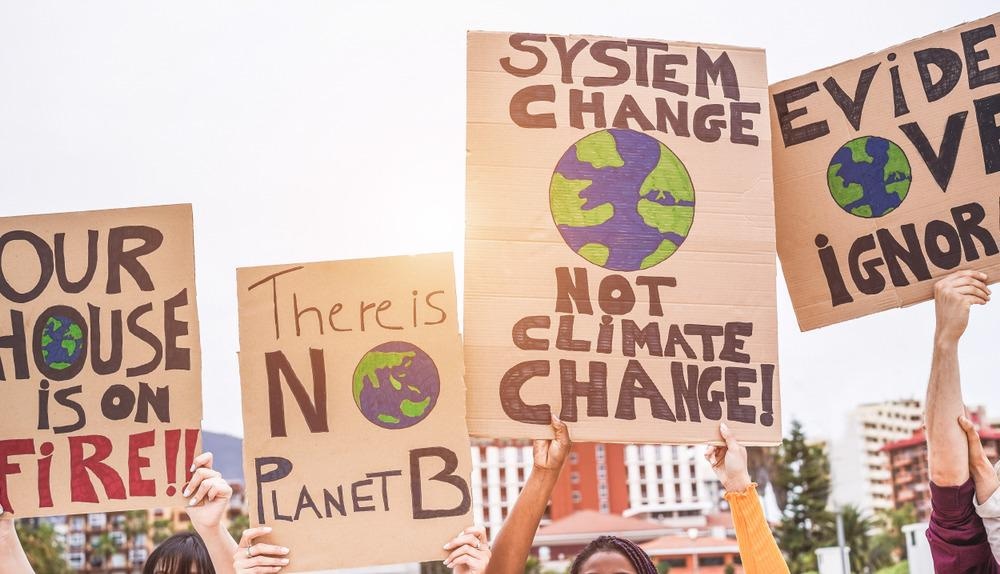Climate change is a growing existential threat to human society. Extreme weather events are on the increase and the oceans and land are warming. Climate inaction has a human, environmental, and economic cost. A report published online by the Climate Council of Australia has counted the economic cost of Australia’s inaction on climate change.

Report: The Economic Costs of Australia’s Climate Inaction. Image Credit: Disobey Art/Shutterstock.com
The Economic Cost of Climate Change
The message conveyed by the world’s climate scientists is an urgent and clear one: human-driven climate change is a growing threat to the world’s population and vital ecosystems. Increasing extreme weather events such as bushfires have an impact on life, property, infrastructure, productivity, and national economic health. Healthcare costs add an economic burden both individually and at the societal level.
In Australia and other countries where temperatures are already reaching unbearable levels, education is disrupted due to absenteeism caused by insufficient cooling in classrooms. Loss of life and biodiversity can be difficult to quantify in economic terms, but it is unacceptably high.
The global economic cost in 2020 was estimated to be in the region of AUD $272 billion, with costs predicted to rise over the coming decades. Estimates have predicted that the world will suffer economic losses of AUD $24.1 trillion by 2100. To put this figure into context, according to 2020 figures from Statista.com, the total global GDP is in the region of USD $84.54 trillion.
Cutting Carbon Emissions in Australia
To meet the targets laid down in Paris in 2015 and reiterated at COP26, the world must swiftly move to net zero emissions by 2050. This will need a drastic reduction in carbon emissions in the coming decade. There must be a swift move away from fossil fuel reliance and an increase in renewable energy and environmental remediation strategies.
Many countries have reiterated their net-zero plans and strategies to reach net zero in line with internationally agreed policies. However, some countries are far behind others, with insufficient plans and a stated desire to keep fossil fuels in the mix over the interim period at rates beyond what is acceptable.
Is Australia's climate change strategy doomed to fail? | The World
Video Credit: ABC News (Australia)/Youtube.com
Australia is a nation that is falling behind many other advanced economies with its stated carbon emission reduction plans. The playing field is not level.
The report has stated that the Australian government has failed to recognize the economic harm that poor climate policies cause. Additionally, the benefits of the adoption of green technology and internationally agreed climate policies have not been recognized by the nation’s leaders. Australia is falling behind, and its inaction is having a real economic impact.
Additionally, Australia’s main international partners have strong net-zero policies in place. This will likely add to the economic impact for the nation if it refuses to do more to tackle its own emissions.
Leveling the Field with Carbon Pricing Arrangements
Carbon pricing mechanisms and taxes are increasing in adoption across the world. These are seen as the most effective and efficient way to reduce emissions. Carbon prices are paid by the emitting nation, encouraging the reduction in production and consumption of carbon-intensive products. Investment in low-carbon alternatives is encouraged.
Currently, carbon pricing schemes cover one-fifth of total global emissions. Due to current policies sometimes undermining carbon pricing schemes the IMF has proposed a solution: an international carbon price floor arrangement. The aim is to level the playing field by underpinning the price of carbon at a level that encourages low carbon investment. However, this idea is in its infancy and there is little global cooperation.
Carbon Border Adjustment Mechanisms
Nations like Australia must do more, and international agreements must encourage the nation to move away from fossil fuels. Carbon Border Adjustment Mechanisms have been proposed as an alternative. These mechanisms work by making an importer pay a tariff for embedded carbon in products such as steel, cement, electricity, and fertilizer.
A nation with poorer carbon pricing pays a tariff that was not paid for during production. Australia is benefitting economically at the price of countries with more robust carbon pricing policies. This mechanism levels the playing field by removing this advantage, forcing Australia and nations like it to rethink their own climate policies.
The Economic Cost of Australia’s Climate Inaction
Aside from the tangible and growing economic impact of climate change and extreme weather events, Australia risks a loss of earnings from exports if it continues to use fossil fuel-intensive manufacturing practices. Only by swiftly and decisively reducing the nation’s reliance on coal and oil will Australia be able to mitigate its economic losses over the coming decades.
Further Reading
Hutley, N (2021) Report: The Economic Costs of Australia’s Climate Inaction [online] The Climate Council of Australia. Available at:
Disclaimer: The views expressed here are those of the author expressed in their private capacity and do not necessarily represent the views of AZoM.com Limited T/A AZoNetwork the owner and operator of this website. This disclaimer forms part of the Terms and conditions of use of this website.